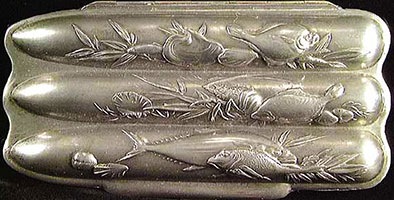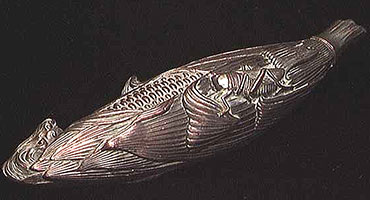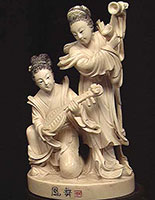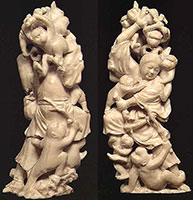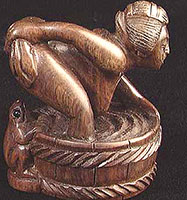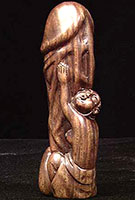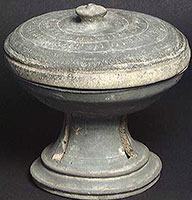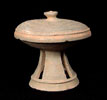The Elegant Richness Of Asian Culture
PAINTING METALWORK IVORY NETSUKE POTTERY SWORDS KOREAN
JAPANESE PAINTING & CALLIGRAPHY
SESSAI MASUYAMA, LORD OF ISE NAGASHIMA 10866. JAPANESE MASTERWORK BRUSH PAINTING, WHITE HAWK IN WINTER. One of a pair. Painting on silk by Sessai Masuyama, 1754-1819. This pair of paintings is highly symbolic, with one likely representing the soul as a white hawk perched in a living body represented as a live ancient pine tree, and the other the soul as a white hawk floating above it's deceased body depicted by a dead pine tree. Signature.
Sessai Masuyama was a celebrated painter of Japan's Edo period (1603-1868) who specialized in paintings of birds in trees and similar scenes. His works are represented in a number of museums including his painting of birds and flowers in the British Museum and a famous painting of a peacock. He is also well known for the monument erected at his posthumous request to bless the souls of the insects that had died so that he could depict them in his paintings. Mushizuka. Sessai Masuyama learned the art of realistic drawing from a Chinese master, Shin Nappin, renowned for drawings of flowers and birds.
Provenance: Berman's Auction House, Morristown NJ c. 2000.
Price on request.
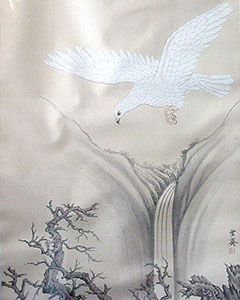
KANO YASUNOBU 13002. MASTERFUL SCROLL PAINTING OF A SCHOLAR SAGE. Kano Yasunobu 狩野安信 (1613-1685). Japan, Edo Period, mid 17th century. Hanging scroll, ink on silk. Depicting a bearded scholar sage wearing robes and holding a fly whisk. The kanji signatures (1) reads 安信筆, Painted by Yasunobu, while (2) reads 狩野安信之筆 Painting of Kano Yasunobu (Note that the character for YASU is different). The painting 38 x 16 inches on a 68 x 19 inch scroll. The bottom roller weight partially detached from the scroll and with one wooden knob missing, otherwise generally excellent condition. Full view. Closer. Even closer. Artist's signature. Owner's signature.
Provenance: Acquired at a Tokyo art sale in the early 1960's by the current owner.
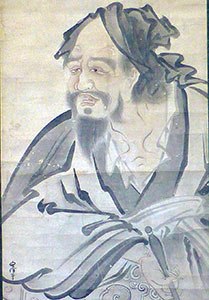
A POWERFUL REPRESENTATION 13003. SCROLL PAINTING OF THE BUDDHIST GUARDIAN ACALA. Japan, Meiji Period, late 19th century. Hanging scroll, ink on silk. Signed 久遠 (Kuon or Kudo) but I have not deciphered the stylized character used for the seal. Depicting the fanged blue guardian demon holding a sword erect in his right hand, a noose in his left hand and the golden lotus flower of enlightenment on the crown of his head. The painting 42 x 16 inches on a 74 x 21 inch scroll. Unfortunate damp stains but otherwise generally excellent condition. Signed Kuon/Kudo and sealed. Full view. Closer. Even closer. Artist's signature.
Acala (Sanskrit: "immovable") is a dharmapala primarily revered in Vajrayana Buddhism, particularly in Tangmi in Japan, China and elsewhere. He is classed among the Wisdom Kings and preeminent among the Five Wisdom Kings of the Womb Realm. Accordingly, his figure occupies an important hierarchical position in the pictorial diagramatic Mandala of the Two Realms. In Japan, Acala is revered in the Shingon Buddhism, Tendai, Zen, Nichiren Buddhism and in Shugendō. Descriptions of his physical appearance derive from such scriptural source as the Mahavairocana Tantra (大日経 Dainichikyō?) and its annotation. His face is expressive of extreme wrath, wrinkle-browed,left eye squinted or looking askance, lower teeth biting down the upper lip. He has the physique of a corpulent (round-bellied) child. He bears a sword in his right hand, and a lariat or noose (羂索 kensaku?) in his left hand. He is engulfed in flame, and seated on a huge rock base (盤石座 banjakuza?). Acala is said to be a powerful deity who protects all the living (衆生 shujō?) by burning away all impediments antarāya (障難 shōnan?) and defilements, thus aiding them towards enlightenment. shōnan In Japanese esoteric Buddhism, according to an arcane interpretive concept known as the three cakra bodies (三輪身 san rinjin?) Acala and the rest of the five wisdom kings are considered embodiments of the wheel of injunction (教令輪身 kyōryō tenshin?), or beings whose actions constitute the teaching of the law (the other embodiments teach by word, or merely by their manifest existence). Under this conceptualization, the wisdom kings are ranked superior to the dharmapala (護法善神 gohō zenshin?), a different class of guardian deities.
Provenance: A private American collection. Acquired at a Tokyo art sale in the early 1960's.

13064. LARGE JAPANESE LANDSCAPE. Japan, Meiji period. Late 19th - early 20th century. The painting depicting a lone fisherman on a tranquil mountain river. 26.5 x 45 inches in a 34.5 x 53 inch mat and frame. Generally excellent condition with minor damp stains to the mat and frame. The brownish vertical bands at the far right of full front and back views are merely shadows and not on the painting itself. Detail. Inscription and seals. Back. Provenance: A private American collection. Acquired at Bermans Auction House in New Jersey around 2000.
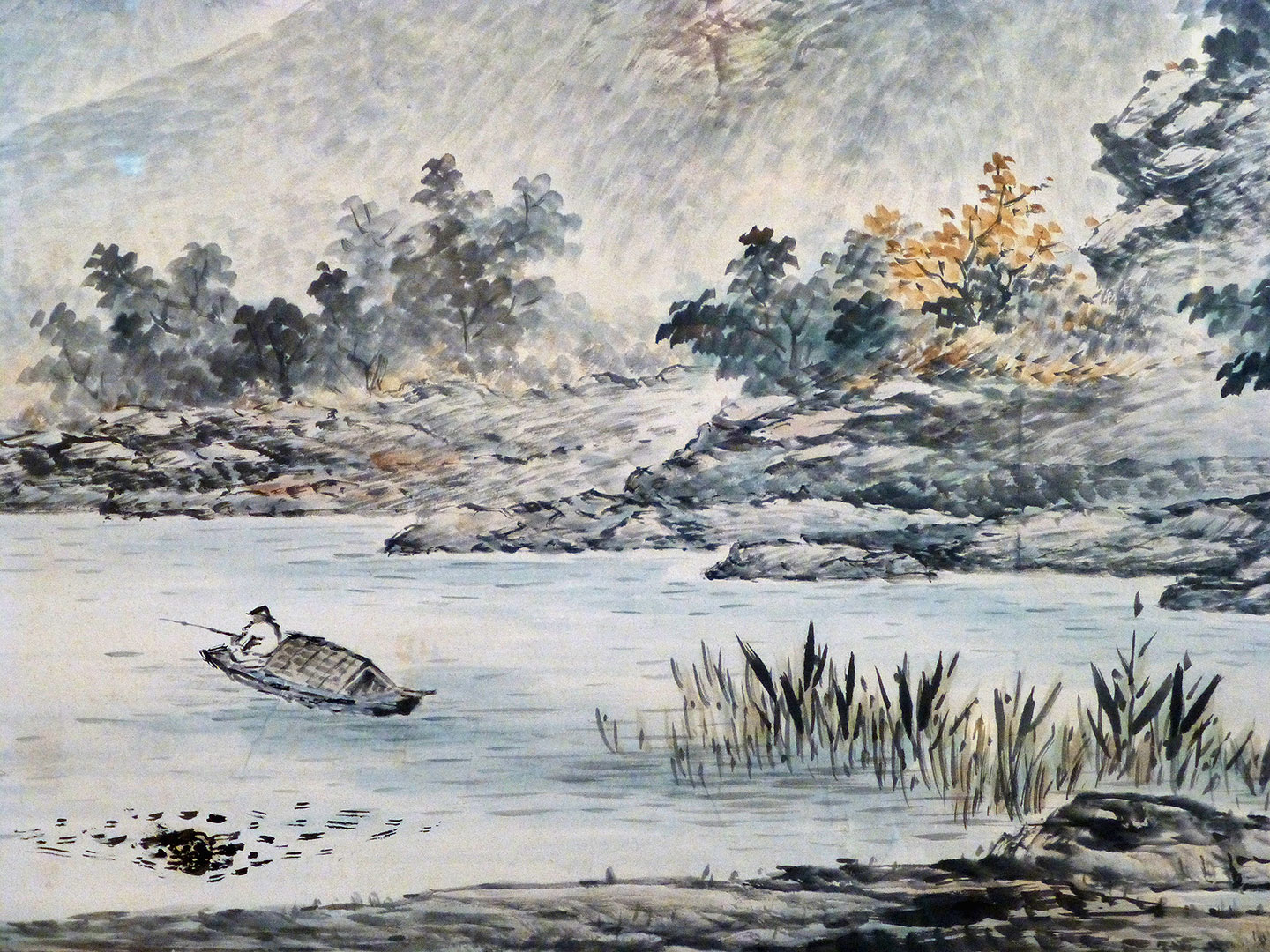
JAPANESE METALWORK ART
JAPANESE IVORY CARVINGS
JAPANESE NETSUKE ART
KOREAN ART
